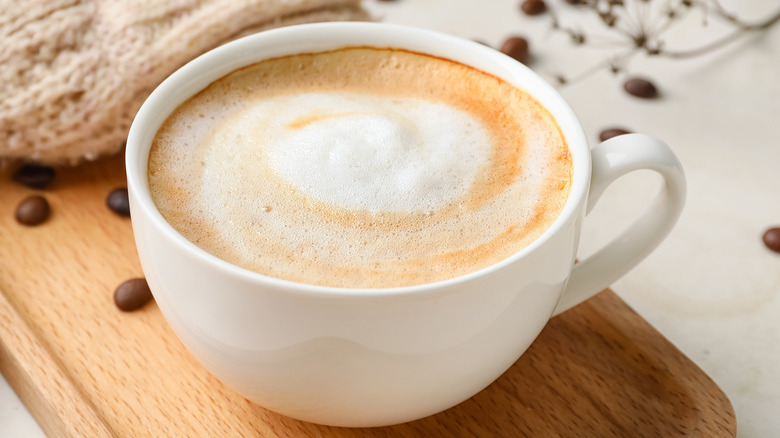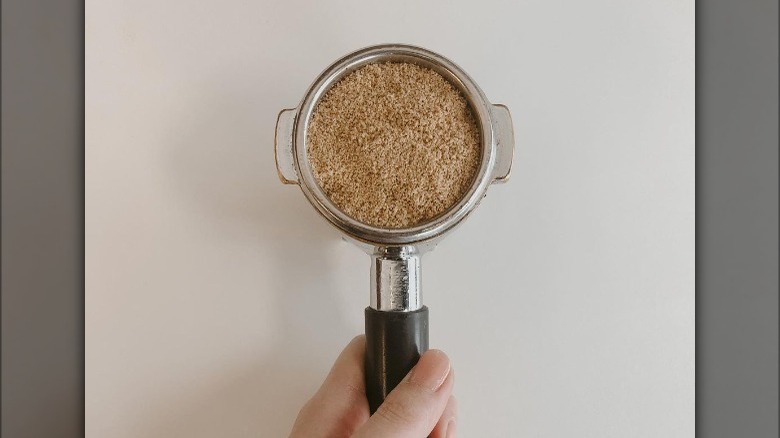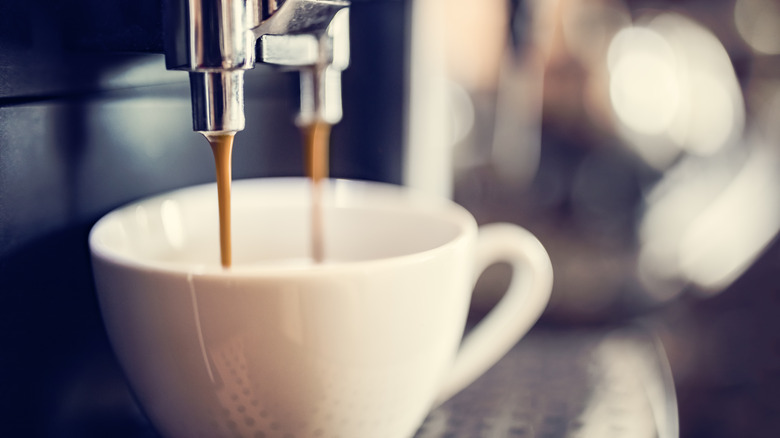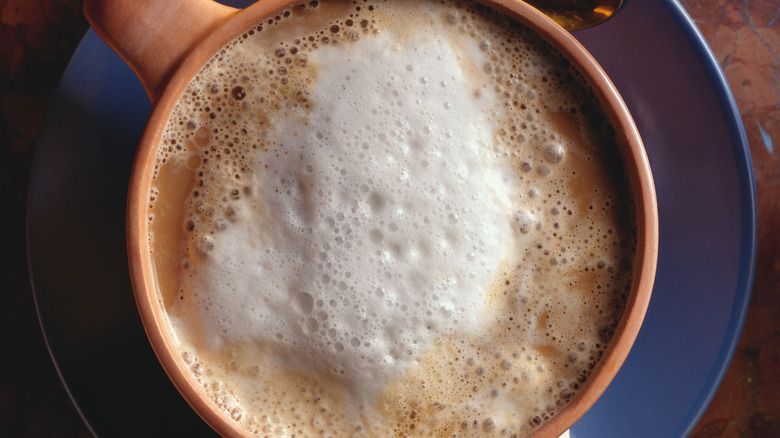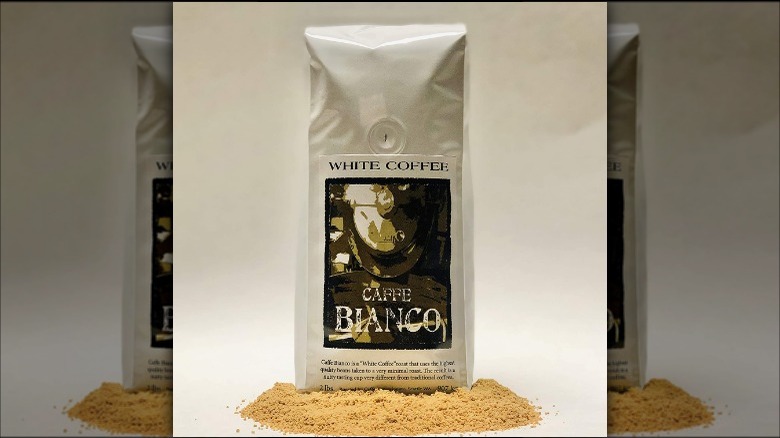What Is White Coffee And How Is It Made?
Even though it's actually been around for ages, white coffee is one of the newest beverage trends that is taking the United States by storm. Generally speaking, white coffee is not your average cup of joe, even though it is made from the same beans as typical light and dark roasts.
There are several distinct elements of white coffee that are grabbing people's attention. Originating in Yemen, white coffee is made from green coffee beans that are roasted halfway at a lower temperature to create a nutty flavor profile. In general, the roasting process is different from other types of coffee roasts, the acidity of the drink is lower, and there are health benefits to drinking white coffee that aren't found in other blends.
Though white coffee can be prepared the same way as traditional coffee, the blend itself can make drinking a latte or the standard morning cup of coffee a little more interesting.
What is white coffee?
White coffee is roasted at around 325 degrees Fahrenheit and results in a hard, light-colored coffee bean, while traditional coffees are roasted between 450 to 480 degrees Fahrenheit. Since white coffee is roasted at a much lower temperature, the beans keep their raw coloring more than any other coffee roast. Unlike traditional coffee, white coffee retains chlorogenic acid, which is usually burnt out of the beans during the roasting process.
This antioxidant has several claimed health benefits such as potentially reducing the risk of diabetes and cancer, per a 2017 study in the European Journal of Nutrition. But despite having a higher concentration of this particular acid, white coffee actually has less overall acidity than other coffee blends.
Some white coffee sellers also claim the caffeine content is substantially higher than traditional coffee. That's not technically incorrect, as it is typically only about 5% higher in caffeine than light, medium, and dark roast coffees — yet some white coffee sellers claim there's up to 50% more. The higher caffeine content comes from the roasting process. Lower temperatures tend to retain caffeine while higher temperatures roast it out.
How is white coffee made?
White coffee should be brewed in an espresso machine to enhance the nutty and sweet taste the beans offer. White coffee has a different nutty, yet sweet, flavor that other brews don't, so using it to make lattes, cappuccinos, and other espresso beverages offers a different drinking experience.
Despite its name, coffee connoisseurs typically drink white coffee black, meaning there's not any milk, cream, or sugar to take away from the bitterness of the beverage. Some white coffee enjoyers add almond milk to the drink to bring out the flavor of coffee beans.
With traditional white coffee, Yemenis will add the spice mixture Hawaij to the drink. Though it's primarily a mixture of black pepper and cumin, Hawaij also contains cinnamon, ginger, turmeric, cardamom, and other spices to enhance the flavor of white coffee beverages.
White coffee vs. traditional coffee
Both white and traditional coffee can be enjoyed in espresso-based drinks, though white coffee has a distinct taste in comparison. People often describe white coffee as having a lack of bitterness, resulting in a sweet and smooth taste. Typically, traditional coffees are at least a little bitter, though they can be sweet, nutty, or earthy to the palate.
Traditional coffee beans range in color from light beige to dark brown, while white coffee beans have a yellow tint. Because of the way they are roasted, white coffee beans end up much lighter in color.
White coffee is not to be confused with Malaysian white coffee, which is charcoal roasted with margarine or oil. While white coffee beans are yellowish, Malaysian white coffee beans are light beige despite both roasting in a similar way. Malaysian white coffee is typically served with condensed milk, while other varieties of white coffee are enjoyed straight up.
Where to buy white coffee
This brew is more likely than not sold as ground coffee rather than coffee beans. White coffee beans have to be ground in a special grinder because of how they are roasted. Normal coffee grinders may break or freeze up if white coffee beans are ground in them.
Coffee drinkers may have trouble finding quality white coffee in stores, though several sellers such as Alaska Artisan Coffee and Caffe Appassionato offer ground white coffee through their company websites and third-party marketplaces like Amazon. Companies like Abbey Roast offer coarse, medium, and fine ground options, while most will pre-grind their white coffee to a fine texture. Wired Willey's and Nectar of Life Coffee note that the coffee will expand while brewing, so it's important to not overflow the grounds.
If you're unsure how to prepare white coffee, some sellers including Poverty Bay offer white coffee recipe suggestions like hazelnut mochas and peanut butter lattes.
